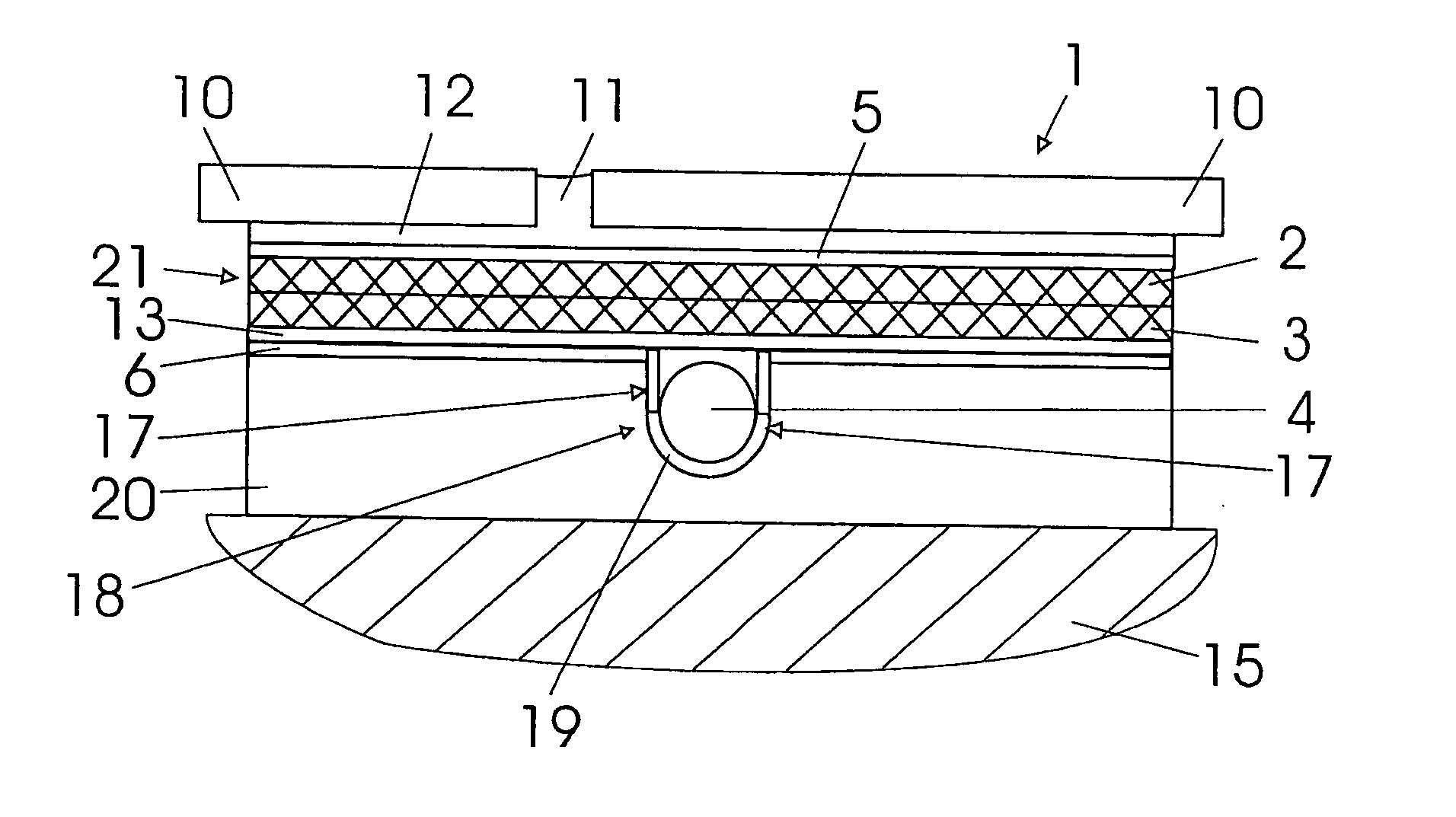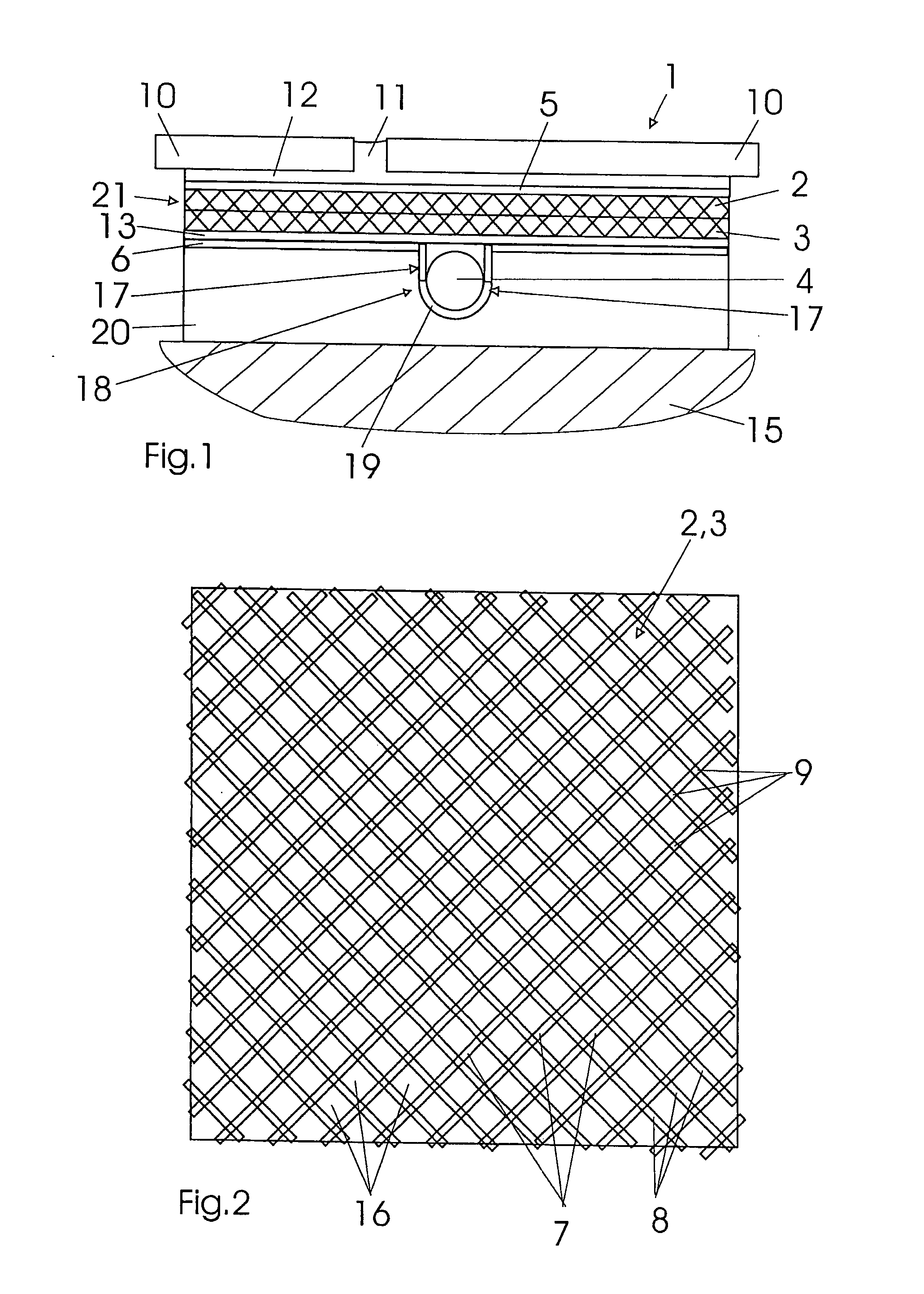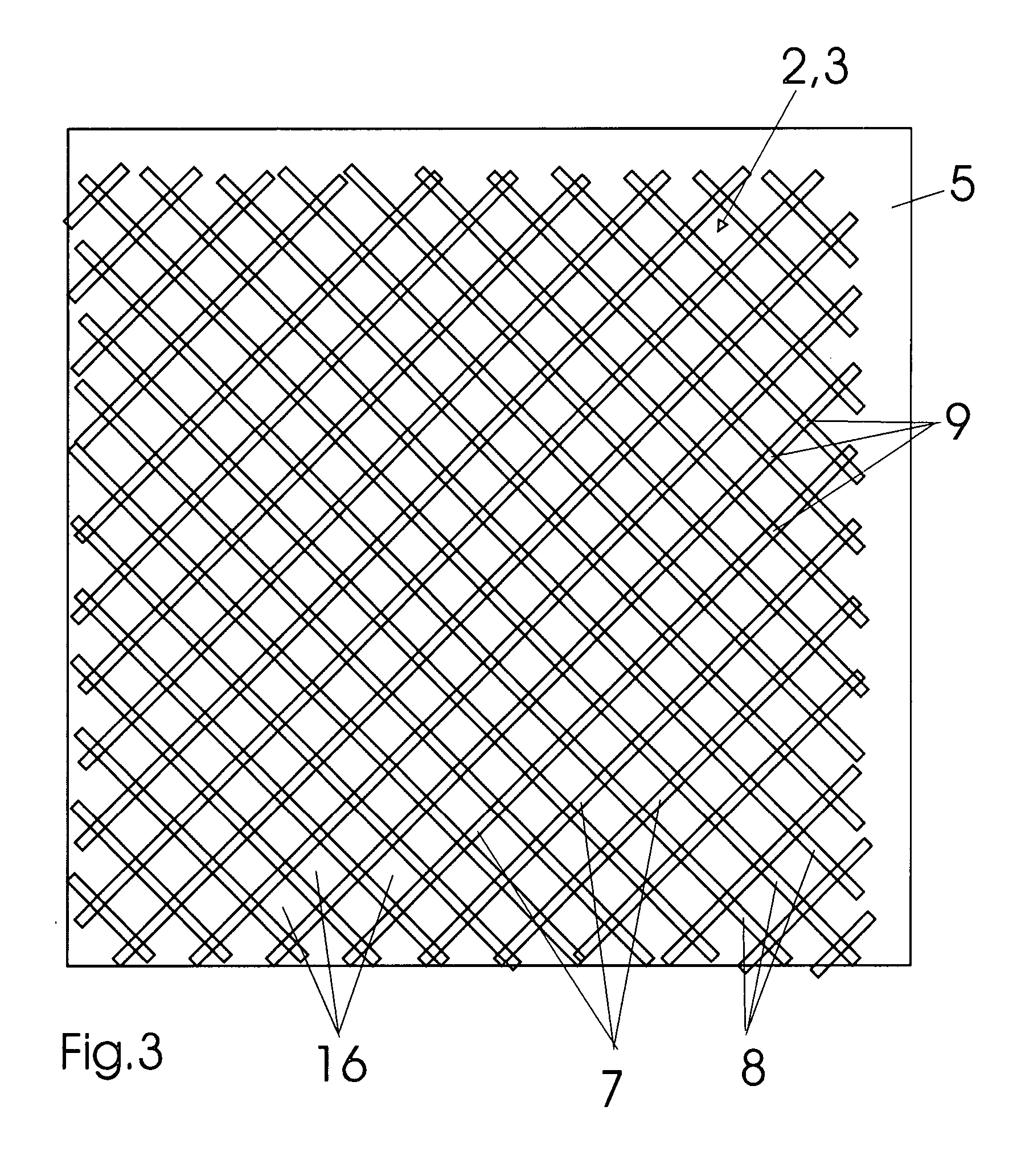Multi-layer build-up system for floor coverings when using floor heating systems
a technology of building up system and floor covering, which is applied in the direction of sustainable buildings, domestic heating details, space heating and ventilation details, etc., can solve the problems of difficult to have a total thickness of less than 100 mm, additional disadvantage of laying ceramic floor tiles, and special stresses on ceramic floor coverings, etc., to achieve good bonding effect, improve the heat balance of the build-up system, and increase the thickness of the layer
- Summary
- Abstract
- Description
- Claims
- Application Information
AI Technical Summary
Benefits of technology
Problems solved by technology
Method used
Image
Examples
Embodiment Construction
[0032] Referring now in detail to the drawings, FIG. 1 shows a sectional side view of a multi-layer build-up system 1 according to the invention, and in FIG. 2, a sectional top view can be seen, approximately at the height of an anchoring layer 3 provided with a grid-like structure element. In FIG. 1, build-up system 1 is shown in the installed state, on a substrate 15, for example a wood floor or the like. Above build-up system 1, a tile covering of tiles 10 can be seen, which has been laid in a tile adhesive 12, using the thin-bed method. The joins 11 between individual tiles 10 are also filled with tile adhesive 12 or a join cement.
[0033] Build-up system 1 according to the invention consists of a plate-shaped component 20, for example made of a heat-insulating foam material, which lies on substrate 15. Component grooves 19 are recessed on the top of component 20, in a known manner, in a laying pattern that is not of further relevance here, or a section of it, to accommodate a pi...
PUM
 Login to View More
Login to View More Abstract
Description
Claims
Application Information
 Login to View More
Login to View More - R&D
- Intellectual Property
- Life Sciences
- Materials
- Tech Scout
- Unparalleled Data Quality
- Higher Quality Content
- 60% Fewer Hallucinations
Browse by: Latest US Patents, China's latest patents, Technical Efficacy Thesaurus, Application Domain, Technology Topic, Popular Technical Reports.
© 2025 PatSnap. All rights reserved.Legal|Privacy policy|Modern Slavery Act Transparency Statement|Sitemap|About US| Contact US: help@patsnap.com



